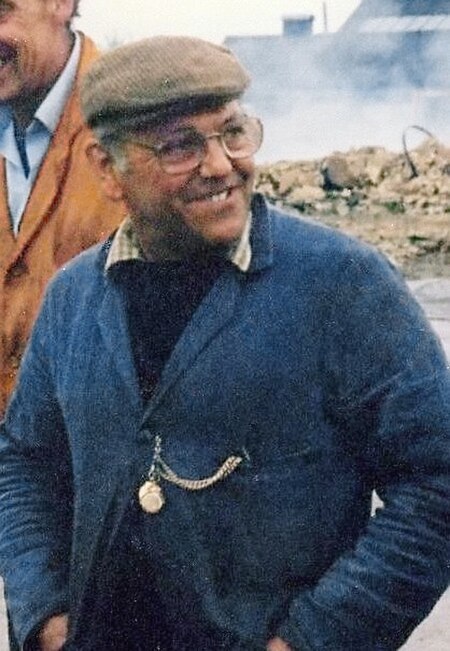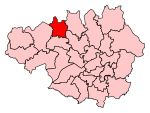Fred Dibnah

Frederick Travis Dibnah, (29 April 1938 – 6 November 2004) was an English steeplejack and television personality, with a keen interest in mechanical engineering, who described himself as a "backstreet mechanic".When Dibnah was born, Britain relied heavily upon coal to fuel its industry. As a child, he was fascinated by the steam engines which powered the many textile mills in Bolton, but he paid particular attention to chimneys and the men who worked on them. He began his working life as a joiner, before becoming a steeplejack. From age 22, he served for two years in the Army Catering Corps of the British Army, undertaking his National Service. Once demobilised, he returned to steeplejacking but met with limited success until he was asked to repair Bolton's parish church. The resulting publicity provided a boost to his business, ensuring he was almost never out of work. In 1978, while making repairs to Bolton Town Hall, Dibnah was filmed by a regional BBC news crew. The BBC then commissioned a documentary, which followed the rough-hewn steeplejack as he worked on chimneys, interacted with his family and talked about his favourite hobby—steam. His Lanky manner and gentle, self-taught philosophical outlook proved popular with viewers and he featured in a number of television programmes. Toward the end of his life, the decline of Britain's industry was mirrored by a decline in his steeplejacking business and Dibnah increasingly came to rely on public appearances and after-dinner speaking to support his income. In 1998, he presented a programme on Britain's industrial history and went on to present a number of series, largely concerned with the Industrial Revolution and its mechanical and architectural legacy. He died from bladder cancer in November 2004, aged 66.
Excerpt from the Wikipedia article Fred Dibnah (License: CC BY-SA 3.0, Authors, Images).Fred Dibnah
Radcliffe Road,
Geographical coordinates (GPS) Address Nearby Places Show on map
Geographical coordinates (GPS)
| Latitude | Longitude |
|---|---|
| N 53.576561 ° | E -2.413272 ° |
Address
Fred Dibnah Heritage Centre
Radcliffe Road
BL2 1NU , The Haulgh
England, United Kingdom
Open on Google Maps






